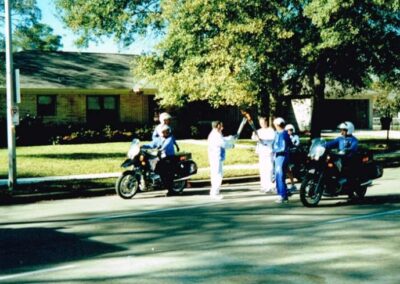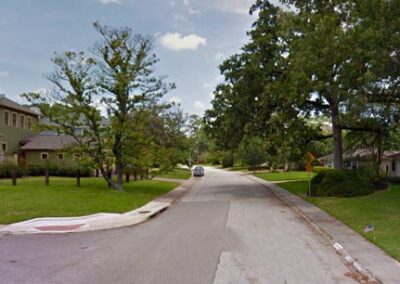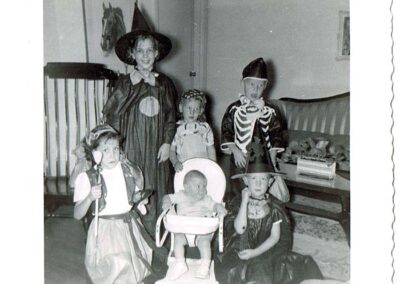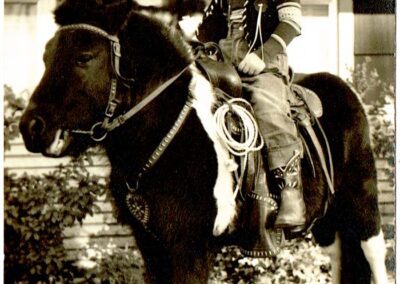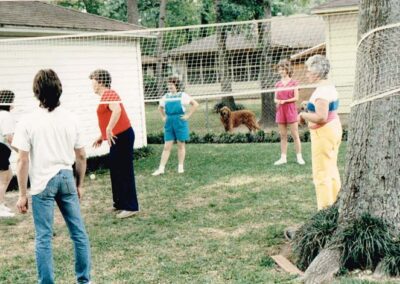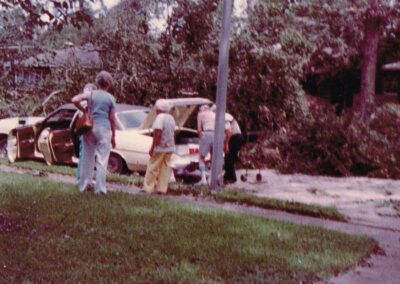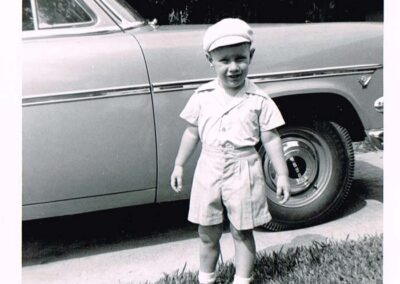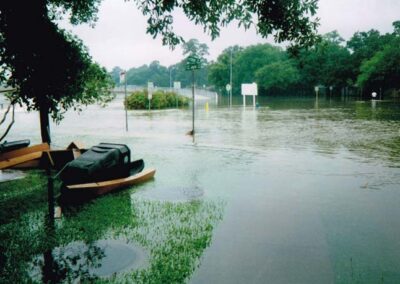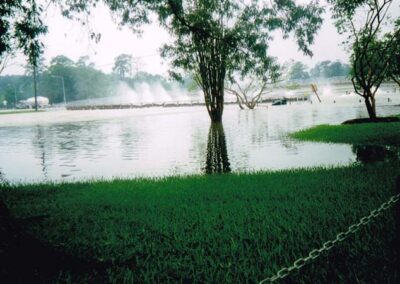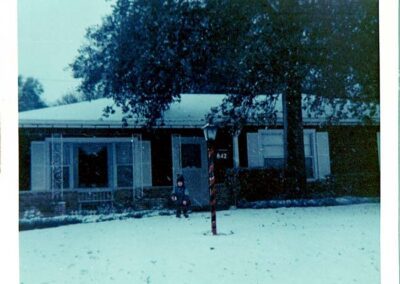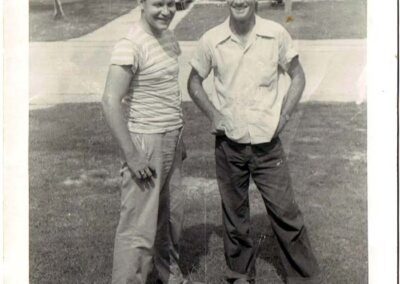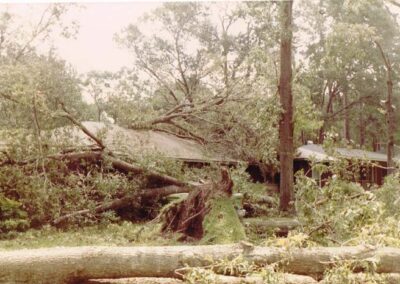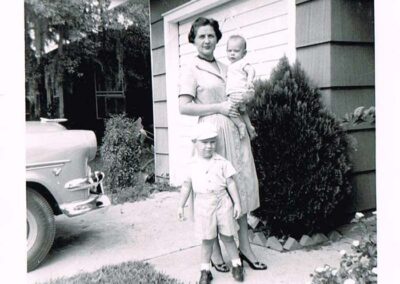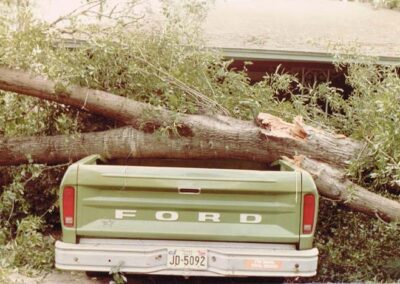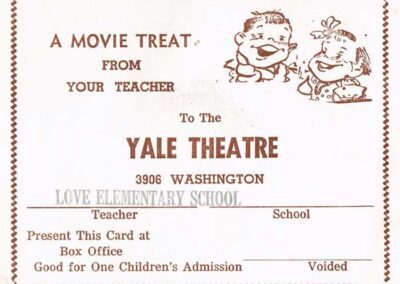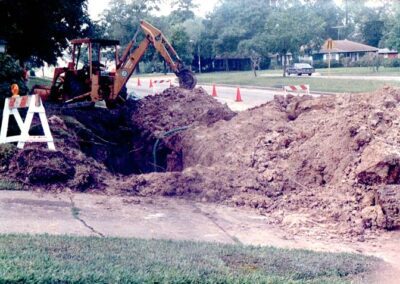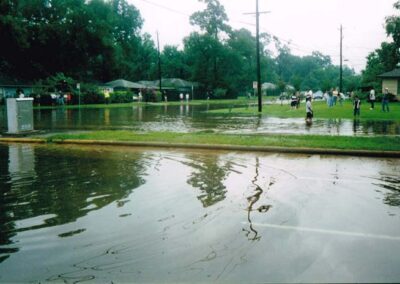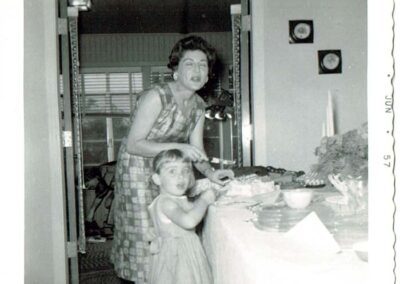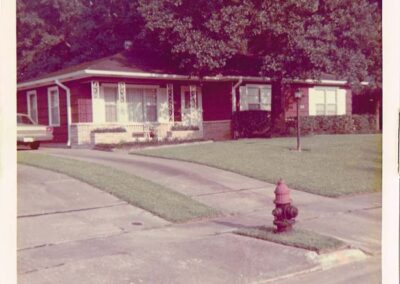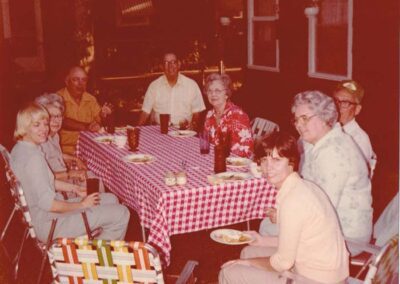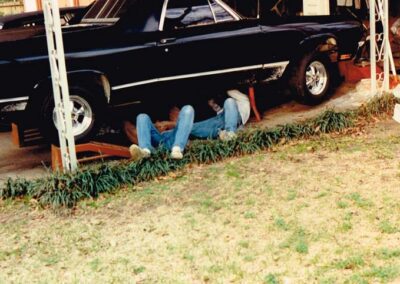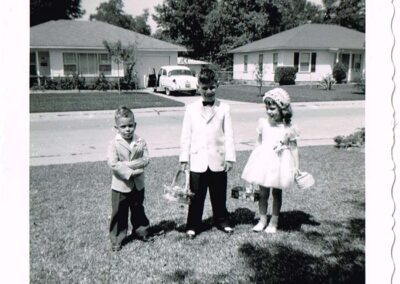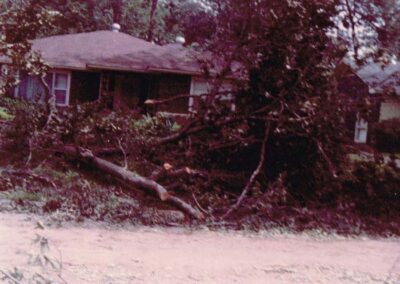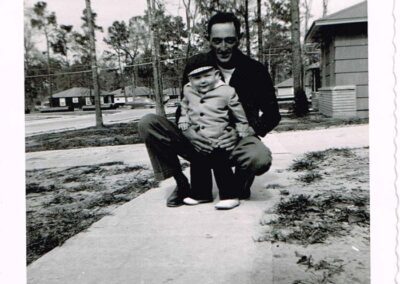Timbergrove Manor was first envisioned by developers’ C.R. Brace, E.R. Carruth and Alex Susholtz in the late 1940’s. World War II was over and the housing boom was on for returning servicemen who were coming for the jobs and opportunities of Houston, Texas.
Sections I-IV were laid out, in what had been up until then, pasture land and woods. The city limits of Houston were just beyond the boundaries of the new neighborhood. The new homes the developers were building had the latest amenities: central heat, whole house ventilating fans in the attic, houses on concrete slabs, a hook up for a washing machine and really unheard of before that, built in dish washers. Clothes dryers were still a thing of the future so each house was equipped with its own clothes line for drying the wash. With some exceptions most of the houses were based on about 6 different house plans and were clad in cedar shakes. Each buyer could customize the house by picking paint colors, as well as kitchen and bathroom tile. Interesting enough some of the contractors and skilled labor that helped build the homes also bought one for themselves. One of those people was also a developer, Alex Susholtz, who built a custom home on two lots that still stands.
The new residents of Timbergrove Manor also had the advantage of living near another new innovation; Merchants Park shopping center. It was anchored by Henke & Pilot grocery store on one end and W.T. Grant department store on the other. Just as today the middle was occupied by a variety of shops that served the community’s needs. In 1950, Merchants Park was truly a cutting edge concept; a wide variety of stores in one place and a lot of parking.
TB-White_Oak-ChannelizationThe early 1960’s saw a lot of construction activity as the city limits started moving further out. White Oak Bayou was a natural stream that followed a meandering path and by any definition, ran wild. The body of water that the Hidden Lake Townhomes on Worthshire gets its name from is actually a long ago path of White Oak Bayou. The Army Corps of Engineers straightened the bayou and concreted the channel for better drainage as it is in its current configuration. West 11th St. was a two lane concrete road with deep ditches on both sides for drainage. Prior to the City of Houston widened it and installing curbs and gutters it wasn’t unusual for the Fall air to be filled with the smell of burning leaves burning in those ditches.
In the early days of Timbergrove Manor parents had an unusually wide variety of schools to choose from. Love and Sinclair Elementary, Hogg and Hamilton Junior High and finally Reagan and Waltrip high school were the predominant choices.
Another long forgotten piece of history was the oil well that was drilled in the early 1960’s by Alex Susholtz at the dead end of Worthshire in what is now Hidden Lake Townhomes. The project came to a halt when all it produced was salt water. Longtime residents remember the big trucks that ran 24 hours a day until the project was halted.
Many long time Timbergrove residents remember when T.C. Jester was a quiet dead end street on both sides of West 11th. That all changed in the early 1980’s when the bridge linking T.C. Jester to I-10 was completed. A few years later East T.C. Jester lost its quiet dead end status and was linked to West 18th Street.
Over the years hundreds of families have occupied homes in Timbergrove Manor. As is the case with great neighborhoods, some of the homes in Timbergrove Manor are occupied by second and third generation family members.
